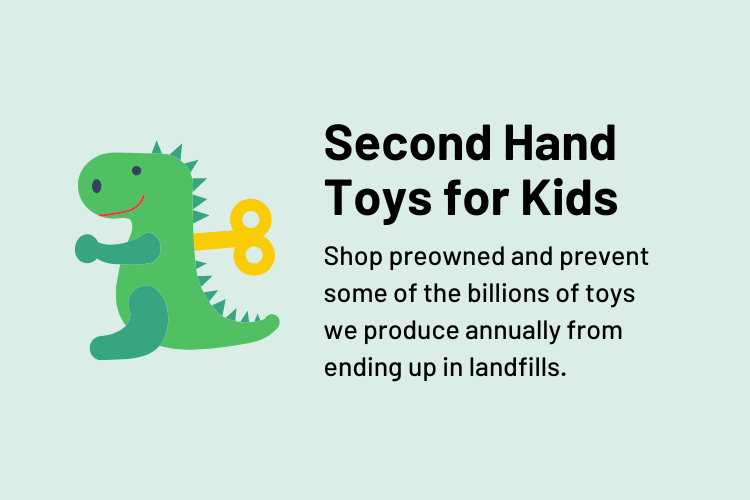
Americans produce around 3 billion toys every year for children, with annual worldwide toy sales worth $104 billion, and thankfully, the eco-toys portion of that pie is growing.
But for every brand new toy, we have to mine and extract new materials from the planet in order to make them, then spend additional natural capital like water and energy, and maybe add toxins and pollutants to the environment in the process.
Buying used toys is one of the greenest things you can do when it comes to your consumer lifestyle.
Benefits of buying used toys
The benefits of this shopping habit are numerous:
- Buying used costs much less than buying new.
- Used products require no new resources or energy to create.
- Landfill space is preserved.
- Useful materials and given a second life rather than discarded before their usefulness has been exhausted.
- Buying used usually means buying locally, which reduces the greenhouse gases emitted to get it to your home.
- Second hand toys are inherently fair trade.
- If a toy was made with off-gassing materials like paints and adhesives, they may well have already released all of their volatile organic compounds (VOCs) making them safer for your indoor air quality.
Where to buy used toys
The most obvious places to find used baby toys are through your local thrift store (including stand-bys like Goodwill) and websites like Freecycle, Craigslist, or Ebay, but today, there are numerous new and easy ways to swap, sell, or get free used baby toys. These are a few geared toward parents looking for second hand toys and games:
Another alternative is to set up your own neighborhood toy lending library or swap group so that you can exchange toys with people in your own community for free!
Ensuring safety when buying used toys
Of course, whether you shop online or at your local thrift store, just as when you buy new toys for your kids, you’ll want to watch out for signs that a used toy might contain unsafe materials. We’ve curated a detailed guide to the safety of plastic toys in a previous article, but here’s a quick rundown.
These tips will help you spot safer second hand toy options:
- Avoid lead: Practice the same safe-paint shopping habits as you would with new toys: Avoid products made in China, know the brands that eschew lead-based paints, avoid toys with flaking paint, and watch for product recalls.
- Steer clear of PVC and phthalates: That means not buying products that come with the “V” or #3 plastic resin stamp (usually on the bottom) inside the chasing arrows logo. If there is no plastic number, avoid flexible, bendy plastic toys.
- Stay BPA-free: These toys can be identified by the #7 plastic symbol on the bottom and will be found in rigid, polycarbonate plastic toys and bottles
